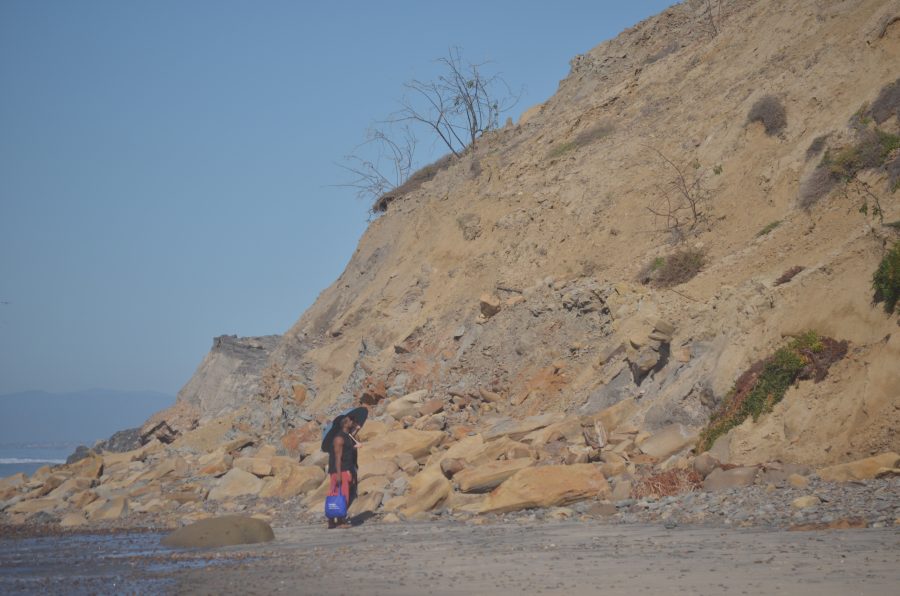Back when we were still wide-eyed, naive high school seniors, getting into college was the ultimate objective. Autumn was dominated by a flurry of SAT score reports, application packets and final exam-type anxiety. A typical senior’s train of thought might have gone something like this: “”This verbal score isn’t good enough for Cal! I should take it again … Ugh, why is Mr. Smith so slow on my recommendation? Maybe there are just too many good things to say about me …What’s this? A college selection for UCSD? I thought UCSD was a college… oh screw it, I’ll just close my eyes and pick one …””
Thus begins the path of the uninformed prospective UCSD student. UCSD may be unique and extraordinary with its six-college system, but it should do a better job of informing potential students about the importance of college choice.
UCSD is distinctive in that it supposedly combines an intimate liberal arts college atmosphere with a large university’s plethora of options and opportunities. We’ve all heard it before in campus tours or admission representatives’ spiels: UCSD is the best of both worlds in the best environment, in, coincidentally, the best state in the best country on the best planet. Not exactly a hard sell.
What these smiley faces don’t emphasize strongly enough, or perhaps what prospective freshmen do not listen to attentively enough, is the crucial choice of college. The fact that college choice determines both general education requirements and living area should only reinforce the need to better inform high school applicants. Nary a day goes by that I don’t overhear an obvious freshman whining about his core curriculum or discussing qualms about his college.
In the colorful brochure offered at the admissions office, there are plenty of glossy pictures of a smiling (surprise, surprise) and diverse student population, sweeping shots of eucalyptus trees, and of course, the requisite panoramic of the campus to remind students yet again that yes, we are by the beach. In between are descriptions of the colleges, including general education requirements and college-specific student organizations. The printed purpose of each college is written as well.
But to an applicant, “”Dimensions of Culture”” might as well be a foreign phrase. Furthermore, each “”focus”” of the college is explained in a generic, do-good-for-the-world fashion, making them difficult to distinguish from one another. I’ve talked to far too many students who were unfortunate enough to blindly choose their college and inevitably regret it later. Granted, all colleges have their quirks and qualities and probably do offer a somewhat equal level of an enjoyable undergraduate experience. However, a lack of knowledge on an applicant’s behalf hinders them from gleaning as much enjoyment as they possible could. A double non-science major in Revelle College may find it possible to graduate in four years, and an engineer in Eleanor Roosevelt College might be able to take summer school, but had they known more about their colleges, they could avoid the unnecessary headache.
How might this be accomplished? The approach should be two-fold: first, to emphasize what exactly the college system encompasses and fulfills; second, to better delineate the aspects of each college. Perhaps the brochure should eliminate one smiling photo and replace it with a notice that stresses the importance of college choice. Maybe admissions representatives could make one extra push about it after their effusive praise. Or one of those many letters/advertisements sent to recruit students could address the issue. And certainly it’s partially the student’s responsibility to become a better-informed applicant.
In addition, the individual colleges themselves could take part in educating their prospective and current students as well. This might include giving separate presentations on Open House or Admit Day, or distributing sheets or packets that better elaborate the goal and curriculum of each college. Aside from pictures of their facilities (which would in fact be very helpful), these materials could elaborate on the common interests of their students, the core curriculum’s purpose and a more detailed outline of the focus and relation to its namesake. Applicants would, ideally, start getting a more coherent idea about each college’s distinct personality and those of its students. After all, part of the objective of the multi-college system is to divvy up and align students’ preferences and philosophies with those of their college.
It is very likely that those who can better understand and identify with their college will better enjoy college-specific activities. Each college’s attempt to educate applicants could contribute to even a more enthused, spirited populace. Wouldn’t it make sense for someone who chose their college, rather than randomly select it, to be more excited about attending this school? Since every applicant has the unique privilege of choosing his college, they should get the most out of it.
The effect of any better-informed community is almost assuredly beneficial, and has the potential to spill over to other areas. Students who can make an informed decision about their college will perhaps be livelier contributors to their individual colleges and to the university as a whole. Also, in what may be students’ first decision concerning their collegiate experience, college choice serves as a precursor of reverberant decisions to come: what major to stick with, what classes to take and what career path to eventually pursue.
Prospective students need to know that the choice they make will affect them more than they think it does. While many know that UCSD is ranked No. 7 among public universities, many don’t know the first thing about their own college. With a more-informed student comes a better experience, as well as a more satisfying college and university tenure. A physics major in ERC may still take the intellectual marathon through the hell that is Making of the Modern World, but at least he would have wanted to.







